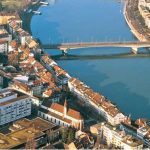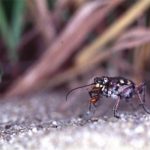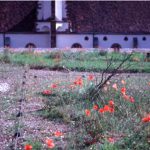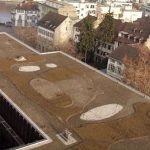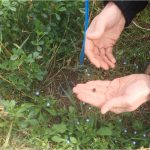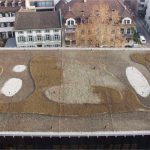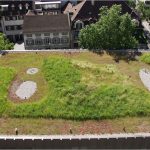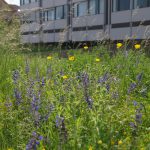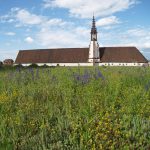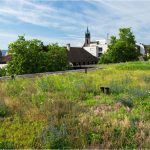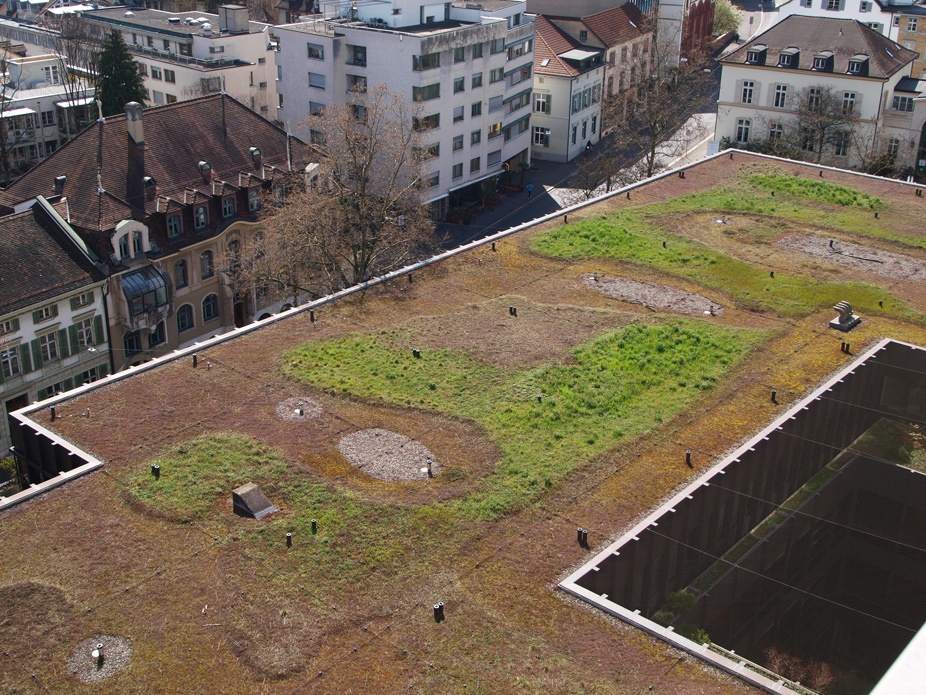
Additional Resources
The University Hospital of Basel (Cantonal Hospital of Basel) is located at Hebelstrasse 32, CH – 4031 Basel; Tel: +41 (0) 61 265 3110. Watch the 2:12 video Klinikum 2, Cantonal Hospital of Basel – Project of the Week 5/18/15 from Greenroofs.com on the greenroofsTV channel on YouTube. Read the December, 2006 Space for Urban Wildlife: Designing Green Roofs as Habitats in Switzerland by Stephan Brenneisen in Urban Habitats. See an extensive case study of the work of Dr. Stephan Brenneisen and Nathalie Baumann on biodiversity in Switzerland including the Klinikum 2, Cantonal Hospital of Basel on pages 93 and 96 in Green Roofs in Sustainable Landscape Design, 2008, by Steven L. Cantor. For additional info, contact Stephan Brenneisen, Dr. phil Geograph, ZHAW – Zurich University of Applied Sciences, Institute of Environment and Nature Resources, Centre of nature management-Urban Greening, Competence Centre Green Roofs, at bres@zhaw.ch or Nathalie Baumann, Dipl. BioGeografin, email: bale@zhaw.ch.
Related: See the 2010 Basel, Switzerland: Building regulations for green roofs by Kazmierczak, A. and Carter, J. in grabs.
The University Hospital of Basel (Cantonal Hospital of Basel) is one of the five university hospitals of Switzerland. Located in the city center, the University Hospital Basel brings together 50 clinics, units, and institutes all working together in an interdisciplinary manner under one roof. The University Hospital offers a complete range of major medical services, including these outstanding centers of excellence: Oncological Centre, Urology Clinic, Heart Centre, and the Lung Centre. Originally constructed in 1937, by 1990 Klinikum 1 (Clinic 1) had several greenroofs installed for the benefit of patient health. Klinikum 2 was built in 1978 and all of the flat roofs sported greenroofs.
In 2003 one of the greenroofs on the Klinikum 2 (Clinical Center 2) of the Cantonal Hospital of Basel was reconstructed as a pilot “Habitat” greenroof spearheaded by Dr. Stephan Brenneisen, greenroof and biodiversity expert and head of the Green Roof Competence Center at Zurich University of Applied Sciences (ZHAW) in Wädenswil, Switzerland. The building contains four greenroofs: starting at the top roof is an extensive sedum mat greenroof; off the fourth floor is the research greenroof highlighted here, located below a tower building which houses many patients; and a 3′ deep intensive greenroof at the third floor encircles the fourth, an interior ground level intensive courtyard garden built over an underground garage.
Researching the ecological significance of extensive greenroofs as contributors to the protection of nature and species, Dr. Brenneisen designed a space to encourage and test biodiversity, built in accordance with the city’s new guidelines on greenroofs and urban biodiversity. The Basel area is part of the central European mosaic of warm-dry regions and contains their typical flora and fauna, and some of the habitat types associated with the area were recreated on the greenroof of the Cantonal Hospital of Basel. Dr. Brenneisen’s design mimics the river bank conditions of the nearby Rhine River and the substrate regimes on this roof range from gravel and sand (simulating river terrace conditions) to topsoil coverage (for near-natural dry meadows). The original substrate depths were 6, 12, and 20 centimeters.
Substrate materials include regional soils, sands, and a sand-gravel-loam mixture, designed at the different levels for the colonization of diverse fauna. The roof was left to seed itself from the germination of seeds within the substrates, which resulted in a 60‐70% primary vegetation coverage during the first vegetation period. The entire roof was left to naturalize with no maintenance or irrigation. The roof was then overseeded with the “Basel Mix” – a mixture of native annual and perennial herbs.
Different micro habitats provide living areas for many local plants and animal species. Partly open with scant vegetation, the vegetated roof contains two large gravel areas to attract birds as well as tall grasses and sedums. There are also areas of sedum and herbs, moss, and large grass meadows with mixed areas between.
Dense grass communities offer a very diverse habitat, luring many species native to a riverbank location. Large branches and big stones were included in the design and provide cover. The roof is monitored for birds, spiders, beetles, ladybugs, bumblebees, and more.
At present, Dr. Brenneisen and his team at ZHAW are studying beetle communities, which are the best bioindicators to observe habitat conditions, and the number of different species now living on this roof. In 2015 this number included more than 100 different beetle species.
He concludes that the more growing media substrate (therefore more water holding capacity) you can give on a greenroof, the greater the opportunities for biodiversity; the greenroof’s substrate thickness defines its habitat condition. He advises using local soils that can be mixed with technical soils like lava pumice in a range of depths.
 Greenroofs.comConnecting the Planet + Living Architecture
Greenroofs.comConnecting the Planet + Living Architecture
